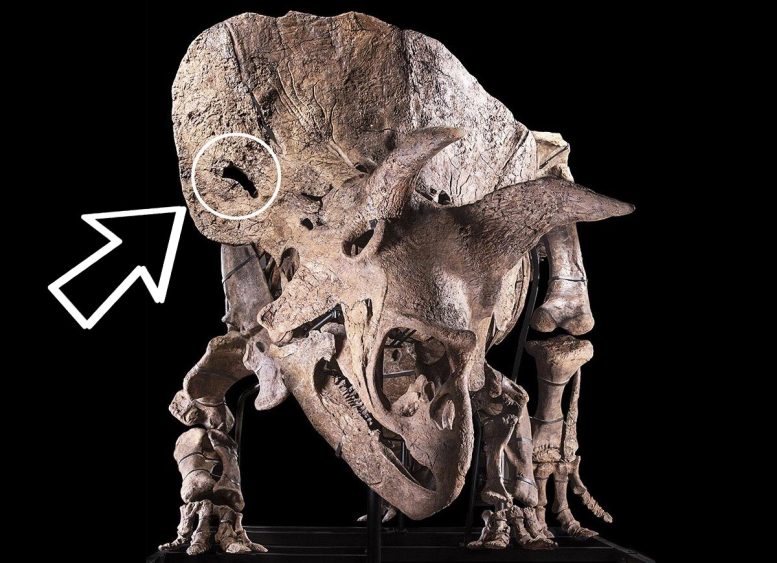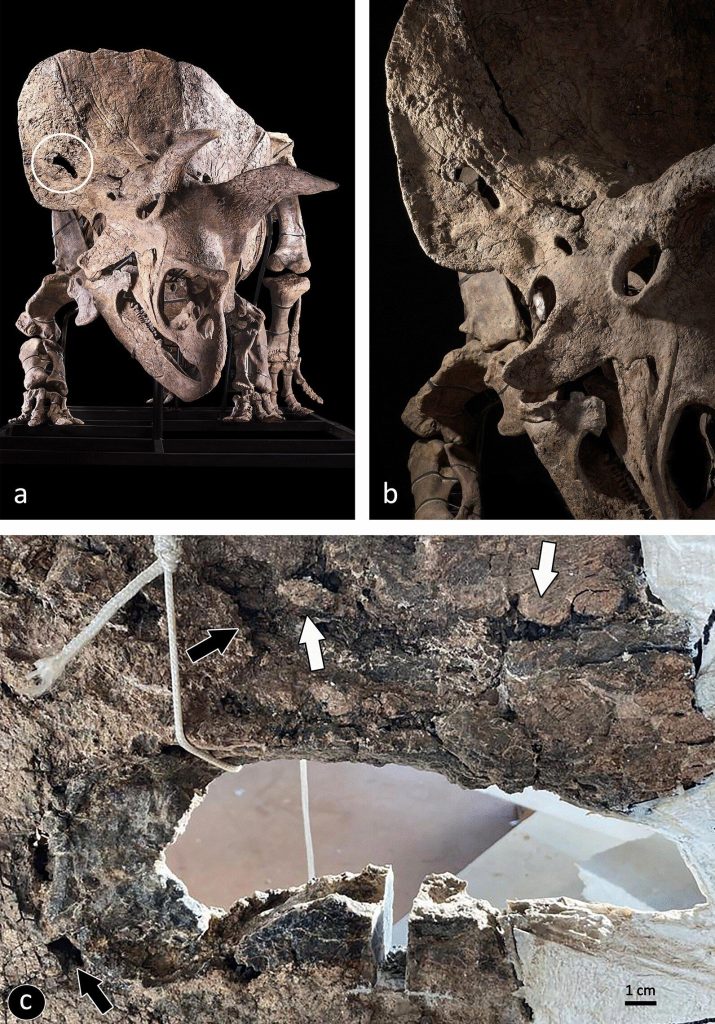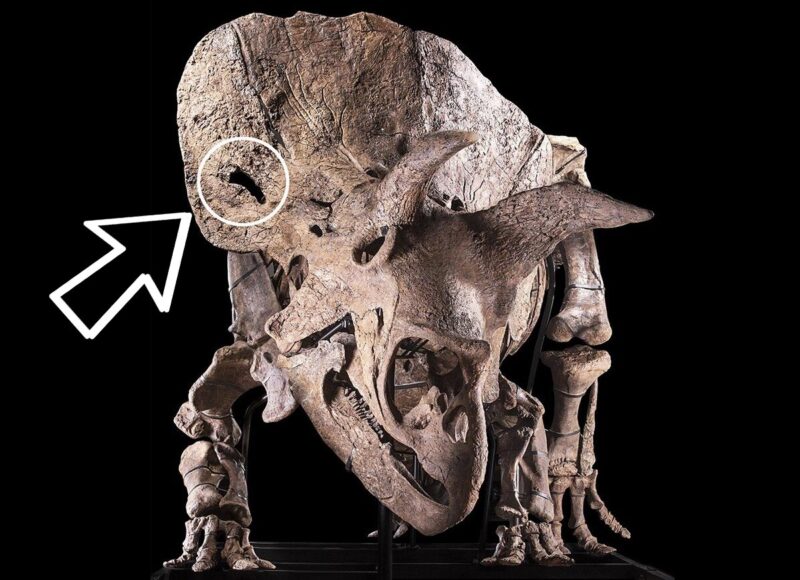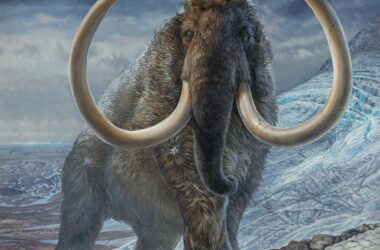
Le Triceratops horridus Big John. Le squelette complet restauré ; la fenestre analysée ici est indiquée par le cercle blanc (avec l’aimable autorisation de Ferrara A., et Briano I.). Crédit : Scientific Reports (2022). DOI: 10.1038/s41598-022-08033-2
Les restes fossilisés du spécimen de tricératops connu sous le nom de “Big John” présentent des blessures au crâne qui peuvent avoir eu lieu lors d’un combat avec un autre tricératops, selon une nouvelle recherche publiée dans la revue Scientific Reports. Scientific Reports.
Triceratops (Triceratops horridus) est une espèce de dinosaures à cornes caractérisée par une grande collerette au niveau du cou, formée par les os du crâne du patio et du squamosal. Il a été suggéré que cette collerette osseuse servait de protection contre les blessures des autres tricératops lors des combats.

Le Triceratops horridus Big John. (a) Le squelette complet restauré ; la fenestre analysée ici est indiquée par le cercle blanc (avec l’aimable autorisation de Ferrara A., et Briano I.). (b) Détail du crâne (courtoisie de Ferrara A., et Briano I.). (c) Détail de la fenestre : un dépôt d’os réactif en forme de plaquette (flèches blanches) et des lésions lytiques (flèches noires) sont visibles sur la surface osseuse autour de la lésion. La région où a été prélevé l’échantillon à analyser est visible sur la marge inférieure. Crédit : Scientific Reports (2022). DOI: 10.1038/s41598-022-08033-2
Ruggero D’Anastasio et ses collègues ont examiné le spécimen de tricératops connu sous le nom de ” Big John “, ainsi nommé pour sa grande taille, qui a été découvert en 2014 dans le Cretaceous Hell Creek Formation, Montana, USA. They report the presence of a keyhole-shaped opening (a fenestra) in the right squamosal bone. The bone surface around the fenestra is irregular and features plaque-like deposits of bone, which could have resulted from inflammation (possibly from infection). The authors analyzed samples taken from the larger margin of the fenestra, which reveal that the bone tissue around the fenestra is porous with lots of blood vessels compared to bone tissue further from the fenestra, suggesting that this was newly formed bone. The bone also showed signs of remodeling, as demonstrated by the presence of little pits known as Howship lacunae.
Together, these features indicate that the fenestra was caused by a traumatic injury but that the bone was healing at the time of Big John’s death. The authors suggest that the injury was caused by the horn of another triceratops, and occurred at least six months before Big John’s death. Based on these findings, the mechanisms underlying the healing process in dinosaurs appears to be similar to that in mammals.
Reference: “Histological and chemical diagnosis of a combat lesion in Triceratops” by Ruggero D’Anastasio, Jacopo Cilli, Flavio Bacchia, Federico Fanti, Giacomo Gobbo and Luigi Capasso, 7 April 2022, Scientific Reports.
DOI: 10.1038/s41598-022-08033-2



